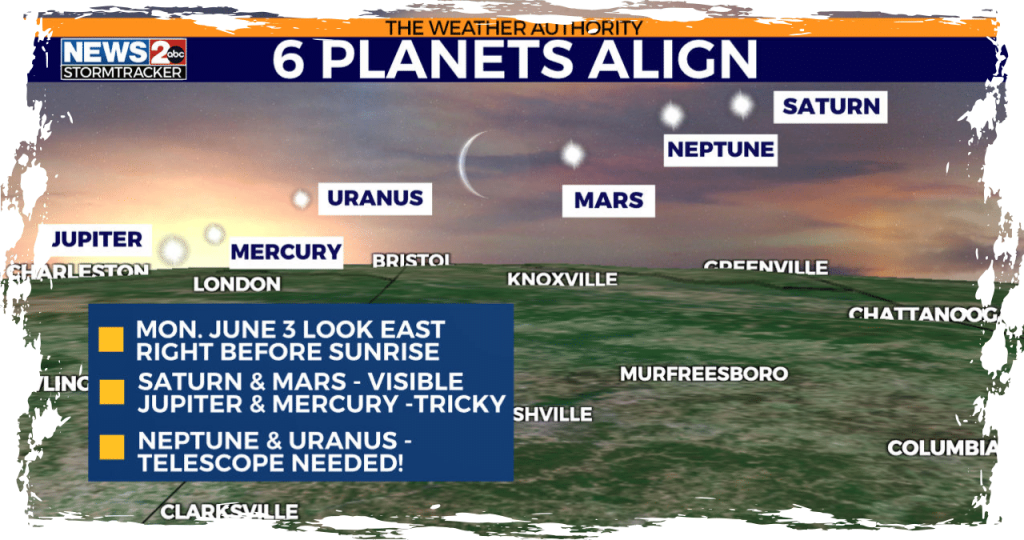On June 3, a captivating celestial event called a “planetary parade” will occur, featuring the alignment of six planets in the sky just before sunrise.
It has been an exhilarating time for skywatchers in Tennessee as they have been able to capture various celestial events right from the comfort of their own homes.
Millions of people across North America were treated to a mesmerizing phenomenon in April when the moon partially blocked the sun during a total solar eclipse. However, residents of Middle Tennessee and Southern Kentucky were only able to witness a partial view of the eclipse, as the moon covered only a portion of the sun.
In May, the Earth was hit by an exceptionally powerful solar storm, resulting in the emergence of northern lights that could be seen across the country, including Middle Tennessee. Captivating images of this remarkable phenomenon were captured by viewers of News 2.
Get ready for the upcoming phenomenon called the “planetary parade” as enthusiasts gear up to witness the alignment of Jupiter, Mercury, Uranus, Mars, Neptune, and Saturn in the night sky on Monday, June 3rd.
What will I see?
This Article Includes
According to NASA, it is important not to get too excited about the upcoming celestial event. While there is some anticipation surrounding it, experts advise that only two planets, Saturn and Mars, will be visible to the naked eye on June 3.
According to experts, it will be relatively easy to spot Venus and Mars in the night sky. Unfortunately, Jupiter and Mercury will be below the horizon during the morning twilight, making them invisible to the naked eye. However, with the help of a telescope, it may be possible to catch a glimpse of Uranus and Neptune.
The weather forecast
The National Weather Service predicts that there will be a chance of a few showers and possibly some thunderstorms late Sunday night in areas located south of I-40. Residents in Middle Tennessee should be aware of the possibility of patchy fog on Monday morning, which could potentially limit visibility.
To catch a glimpse of the planetary parade, set your alarms for 5:10 a.m., just 20 minutes before sunrise. At this early hour, you’ll be able to spot a faintly red Mars and a pale yellow dot of Saturn in the sky.
According to NASA, both planets are already visible in the early mornings and will continue to be visible throughout the summer.
